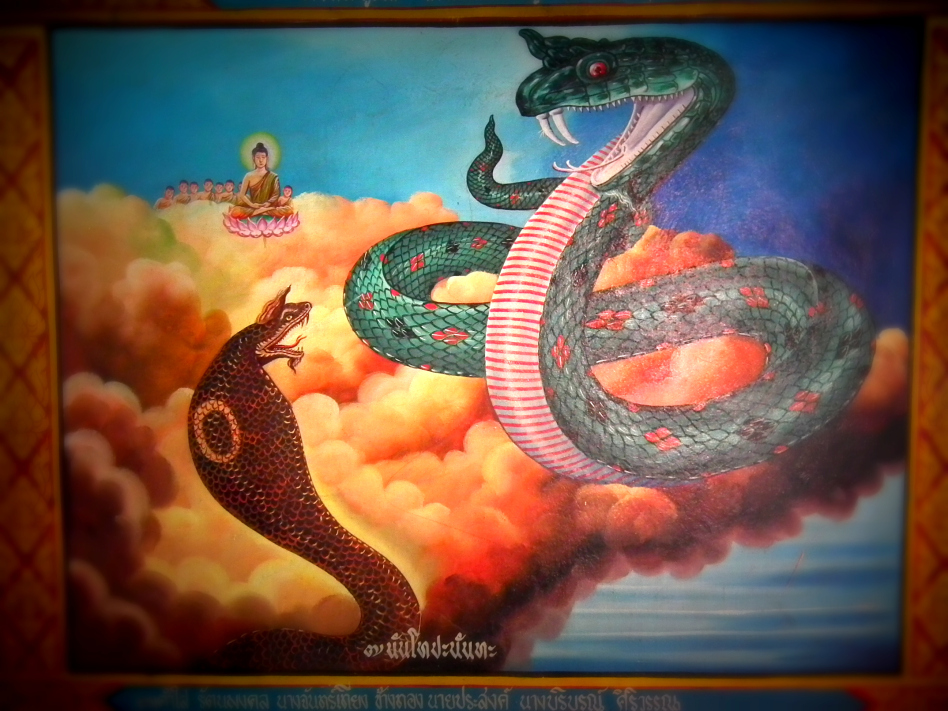
The serpent, sometimes depicted as a dragon, is perhaps the most confusing of esoteric symbols. It’s occulted meaning is an expression of higher and lower consciousness, or more precisely the transformation of consciousness from juvenile thinking to higher thinking.
Given the serpent was used by ancient cultures the width and breadth of the globe for thousands of years, its importance cannot be ignored.
As with all symbols, the snake has positive and negative connotations, but its very meanings are central to understanding human consciousness and the psycho-biological process of mankind.
In actual fact, the serpent/dragon is one of the keys to understanding transcendence to higher states of consciousness and how we tend to fall foul of our sub-conscious mind. But through the serpent, we can find wisdom to overcome our lower conscience self and discover the higher self – that aspect of our personalities that religions call ‘God.’
At its deepest level, the serpent is a symbol of rebirth and renewal. Just as a snake sheds its skin, humans have the capacity to defeat old values that no longer serve us and develop improved values.
We are able to do this by using the power of our innate wisdom which enables us to attain self-knowledge and reach enlightenment.
The snake is often associated with the underworld and depicts the demonic side of our nature – our base instincts that have been shaped by our experiences and arise from the subconscious mind.
But depending where it is placed within esoteric iconography and myth, the serpent also denotes our higher conscious state. In Hindu and Buddhism for example, it is common to find a seven-headed serpent, the Naga, above the heads of the Devas. This denotes enlightened beings – Buddhas.
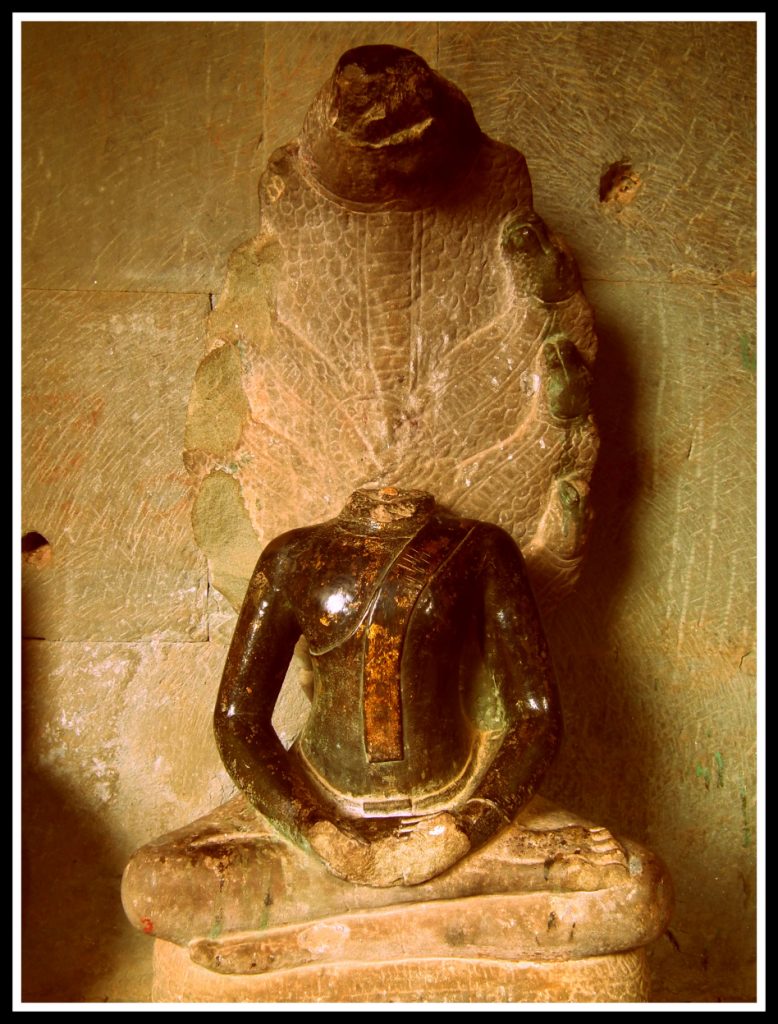
Another representation of the serpent is the male and female energies that run up the spinal column of the body, the Pingala and Ida of the kundalini energy.
When the kundalini is awakened, we are able to overcome challenges more easily and find the balance between duality and singularity. It is at this point when you return to the one true source and understand the meaning of oneness.
It is the challenge of each of us to overcome the demonic serpent of our sub-conscious that leads us into temptation and fly with the mighty dragon of our higher-conscious so that we can experience the purification of body and mind that comes from absolute transcendence.
This same idea is also reflected in the symbols of every major world religion, not only in the form of a serpent, but with the Christian cross, the sun or star (male) and the crescent moon (female) of Islam, the yin and yang of oriental religions and the Star of David in Judaism.
Yet how many religious fanatics can you describe as balanced. If balance is central to religion, and the well-being of mankind, why do the major religions not mention it more often?
Religions include this principle in their symbols, but leave it out of their sermons!
Of course, finding balance is easier said than done, but let’s take a look at how the serpent can help us to understand our true self and be better at everything we do! The serpent draws the line between base consciousness and our higher state of being.
This is where self-help and personal development hits another level!
Look at any time in history, any culture, and you will find the serpent in one form or another.
Even the earliest recorded writing from ancient Sumeria features a snake taking a significant role on centre stage.
In the epic tale of Gilgamesh, the hero sets out to find the meaning of life. He recovers the tree of eternal life from the bottom of the ocean, but a snake eats it whilst he sleeps. Gilgamesh eventually dies, whilst the snake remains immortal.
The symbolic meaning of the serpent here is basically a story of the subconscious having control over your habitual mind. In this state, you always do the things you are accustomed to. As a consequence, you get more of what you already have. You do not develop on a personal level.
“If you always do what you’ve always done, you’ll always get what you’ve always got.” ~ Henry Ford
In another Sumerian myth, Adapa, the serpent-God Ningishzida is depicted with a human head. This represents he is an aspect of humankind.
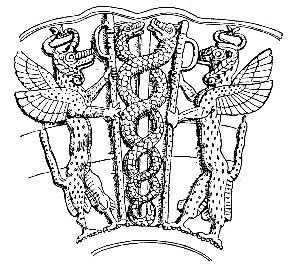
His symbol is two snakes intertwined around a pole indicating the dual aspects of man and the importance of awakening the kundalini energy to transcend on to higher planes of consciousness.
And as we shall see, this is a recurring symbol throughout history – and it has continued right up to the modern age.
The symbolic meaning of the serpent is a key component of the Bible, particularly in the Old Testament. And its appearance in the Garden of Eden is perhaps the most misunderstood concept in theology.
In the story of Adam and Eve in the Garden of Eden, the Serpent is depicted as Satan leading man into temptation.
But the crux of the story is the separation of man’s spirit from the divine spirit. When we are born, we become separated from absolute consciousness – the source of our true nature.
It is due to this separation that we have the duality of good and bad aspects of our personality. And it is our mission in life to rediscover who we truly are. This is the gnostic idea of self-realisation.
And this is why the serpent is one of the most difficult symbols to understand in ancient mythology. When grounded in our normal conscious state, we do not realise that we are connected to absolute consciousness.
Genesis 3:1: “Now the serpent was more subtil than any beast of the field which the LORD God had made.”
Substitute the word serpent for consciousness and the lessons in the Bible begin to make more sense.
When Adam and Eve eat the forbidden fruit from the tree of knowledge, they “know good and evil.” But by knowing good and evil, they can do good and evil – thus both aspects of our personality are revealed and defined by the symbol of the serpent.
Before I go any further explaining the symbolic meaning of the serpent, let’s define good and evil in simple terms. This might surprise many of you, but evil is not always as severe as the church makes out.
They could easily tone the understanding of evil down with the word, “bad,” but would Satan appear as devilish if he was only “bad” and not “evil”?
Probably not, but here’s the real deal.
You know when you want to do something, but know you shouldn’t? This is especially the case for addicts. You know you shouldn’t do it, but you do it anyway.
This is your lower consciousness overcoming you higher consciousness – your evil Devil overcoming good God. Now, look at where the words god, good, devil and evil. You can see where these words are coming from right?
So let’s take a look at two Bible stories which feature the serpent as satan – satan being the lower-conscious mind that tells us to do the bad things we shouldn’t do.
Satan represents temptation, or rather your willingness to give into temptation. Temptation toys with your emotions. Remember the story of Lucifer trying to tempt Jesus when he wandered the desert for 40 days?
Satan could not tempt Jesus, but he did tempt Eve – the feminine principle. Because women are more in tune with their emotions than men, the female principle in ancient symbolism related to emotional impulses. One instance of that is cravings that “lead you into temptation.”
Jesus – a Buddha – was able to overcome temptation because he has control over his emotions. He is strong, wise and patient. Jesus is the type of character we must strive to become. Most of us are like Eve.
This is why we need to learn the lessons of Jesus and not be like Eve. Show the strength of character to overcome your weaknesses and you will become ‘an enlightened being’.
To understand why we struggle to overcome temptation, you need to understand a little about the habitual mind, also known as the conscious mind, or more harshly the delusional mind.
The conscious mind is referred to as the delusional mind because it sees a different version of reality than the true one. In other words, we delude ourselves because the world is an illusion we create in our own minds.
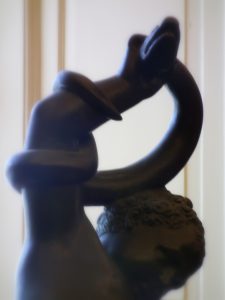
This is how the habitual mind works. And the habitual mind is shaped throughout our lives, mainly as we grow up. Our experiences in life determine how we see the world and as a result, we behave in accordance with how we think and feel.
Scientists say 40 per cent of the time our decisions are made by the habitual mind. This means we are on auto-pilot forty per cent of the time whereby we act out of awareness.
But even when our intentional mind is conscious of the decisions we make, we still have a tendency to make the wrong decision because of our desire – born from an emotional state that is difficult to overcome. And so we are deluded into temptation.
On the other hand, if you show strength and determination to overcome desire and make a sacrifice, you accrue wisdom. This moral grounding is the first step towards self-realisation.
So when we commit to performing an act we know in our heart and mind is wrong, but act anyway, it is a sign of weakness and a rebellion against our true selves.
How often do you allow your demons – base consciousness, to defeat your Gods – higher consciousness.
Essentially this is the fall of men, the fallen angels of Enoch. The fallen angel is Lucifer – the Devil, Satan.
The consequence of acting on thoughts born from the delusional mind, therefore, is we stay in base consciousness rather than transcend to a higher state of consciousness.
We also stay shackled to the walls of Hell.
Jude 1:6: “And the angels who did not stay within their own position of authority, but left their proper dwelling, he has kept in eternal chains under gloomy darkness until the judgment of the great day.”
This description sounds like Hell doesn’t it, the dwelling of Satan. In the myths of other ancient cultures, this figure resides in the Underworld and comes under many names.
Of course, none of these characters or places actually exist, they are merely analogies to help us understand the mysterious aspects of ourselves and the planes of psychological existence we experience from one moment to the next.
Our challenge then is to overcome temptations and master our habitual mind and take control of our emotions.
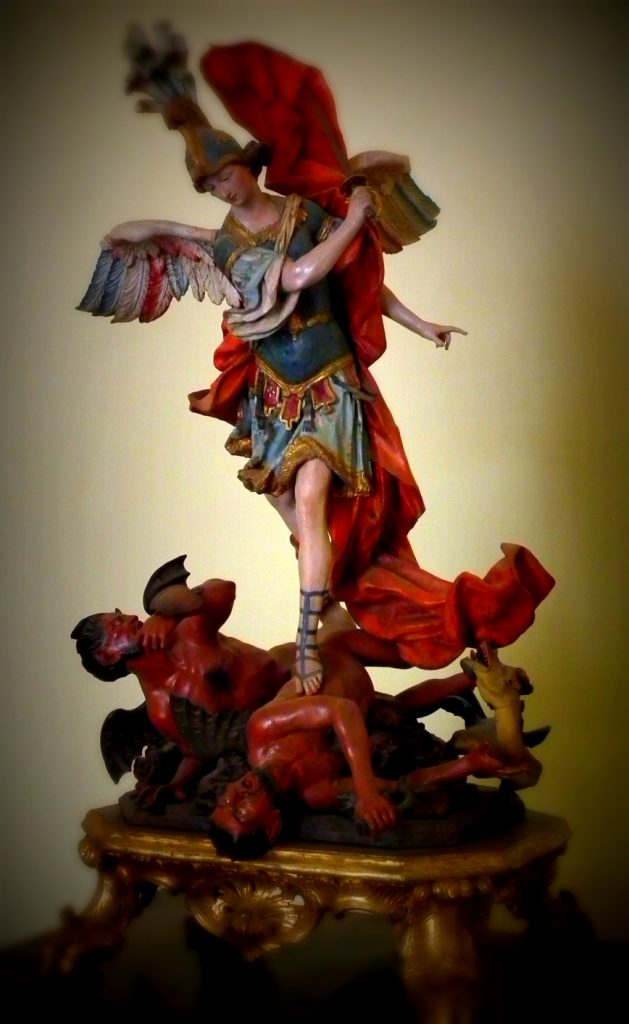
In ancient symbolism, we see this idea expressed in the myth of George and the Dragon and find statues and carvings of enlightened beings standing on serpents or dragons.
These ideas are basically trying to portray the message that man to be in control of his emotions and actions, must first take control of his habitual mind. This is the essence of acquiring wisdom.
Manly P. Hall, one of the greatest commentators of esoteric mysticism wrote:
“The serpent is true to the principle of wisdom, for it tempts man to the knowledge of himself…the serpent is the symbol of prototype of the Universal Savior, who redeems the worlds by giving creation the knowledge of itself and the realization of good and evil. If this be not so, why did Moses raise a brazen serpent upon a cross in the wilderness that all who looked upon it might be saved from the sting of lesser snakes? Was not the brazen serpent a prophecy of the crucified Man to come: If the serpent be only a thing of evil, why did Christ instruct His disciples to be as wise as serpents?”
The serpent also represents good and evil in cultures from all corners of the globe.
Myth stories stemming from native Indians tribes of the Americas reflect this in their depiction of the plumed-serpent, also referred to as the Creator-God and the God of the Underworld.
A prime example is the serpent-God of the native Mesoamericans, Quetzalcoatl to the Aztecs and K’ukul’kan to the Maya.
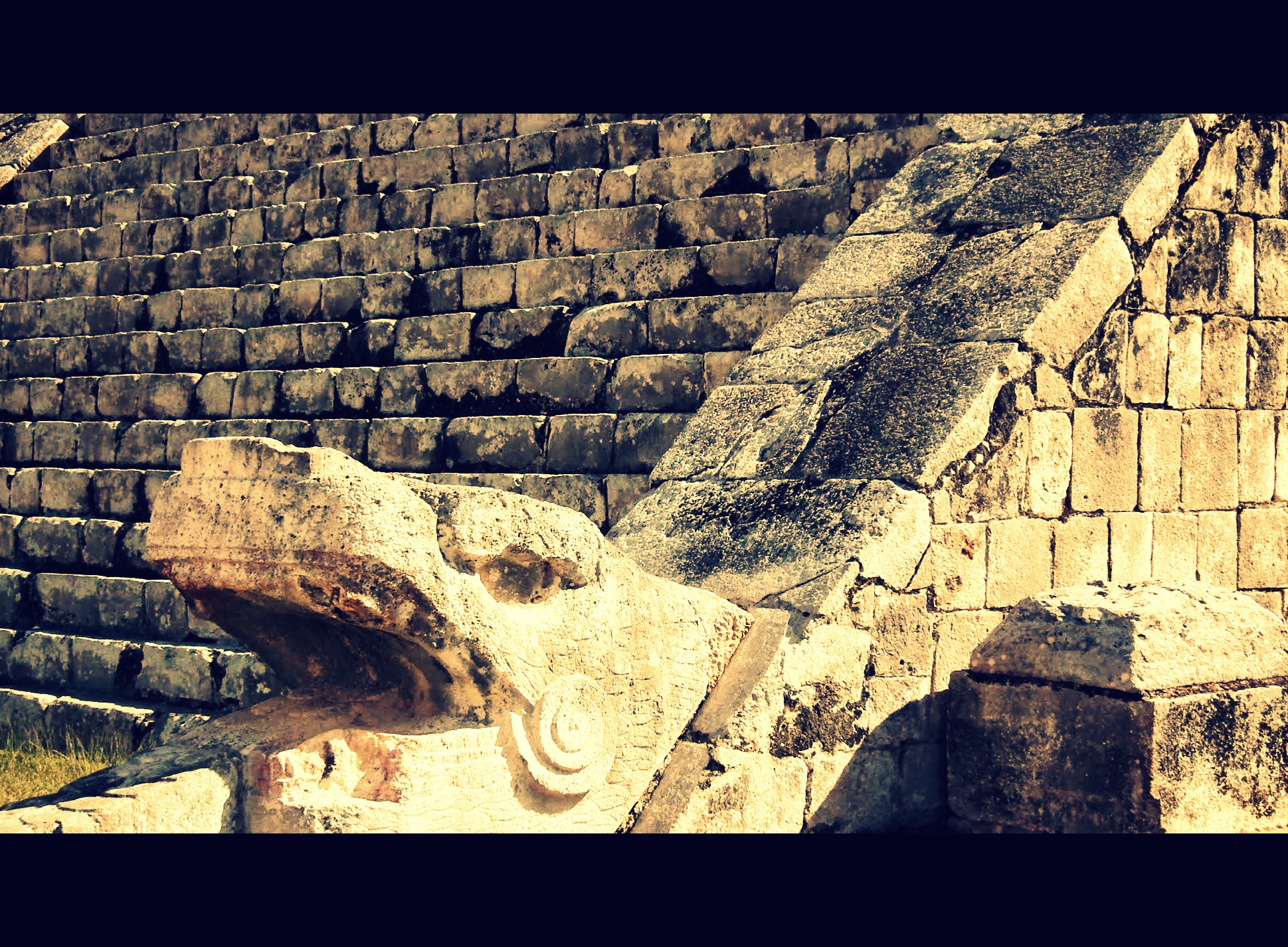
The Gods are typically depicted as a serpent or a dragon in iconography and are considered the primordial God of life, intelligence and self-reflection.
The Aztec creation story recounts how Quetzalcoatl ventured into the Underworld and brought dead bones to life by dripping his own blood on to them. In other words, he makes a sacrifice.
The symbolic meaning of the serpent also reflects the death and rebirth of the sun as it orbits around the earth, and is where the US get the seasonal names, fall and spring. It also reflects the rise and fall of mankind during the course of our lifetimes.
You will also find this idea of death and rebirth expressed in symbolism with the dragon or serpent devouring its own tail. Quetzalcoatl is reflected this way, so too the Ouroboros of the ancient Greeks.
The Maya also devised the attractive pattern of the Hunab Ku, a spiral-patterned circle encased in a square. The circle represents the spirit and the square is the physical form.
The symbol is a reflection of the creator God and reflects that spirit lives in man. Again, the challenge is to bring the two separated aspects into unity.
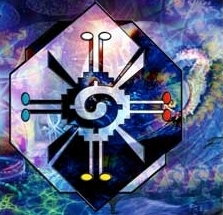
The comma-like symbols represent two intertwining dragons, thus the dual personalities and dual aspects of our conscious mind.
It is by understanding our true nature through acts of good and bad that we accrue the wisdom we need to live balanced and fulfilling lives.
So here we find the same concept, represented using the same symbols by cultures that supposedly never came into contact with one another.
Is this the power of human consciousness picking the same ideas from the energy of the Universe or deception about the history of mankind?
Okay, now I am going to get a little bit mystical on your ass, but it is all-important to understanding the meaning of the serpent symbol – and more importantly how your psycho-biological system works.
But I will do my best not to be too mystical or confusing. Here we go…
Man is nature. Of that, there is little doubt. Nature is all around us, also not in doubt. Where it gets mystical is the notion that we are intrinsically connected with nature and to each other.
This last statement cannot be proven by scientists – not yet at least, although some are trying. You, therefore, have to put some faith into the mysterious patterns in nature and the unexplainable.
And the best person to ask about this is yourself! How many weird experiences have you had that you cannot explain – or in some cases do not want to admit it because it was too “spiritual.”
Our physical reality distorts this pure consciousness with the illusion of duality – the symbolic meaning of the serpent which represents the good and bad aspects of our personality.
There that wasn’t too complex and far-out was it! Now let me explain how this works within our psycho-biological system. You probably already know of the chakra system and kundalini energy.
And you have probably also seen this symbol, right?
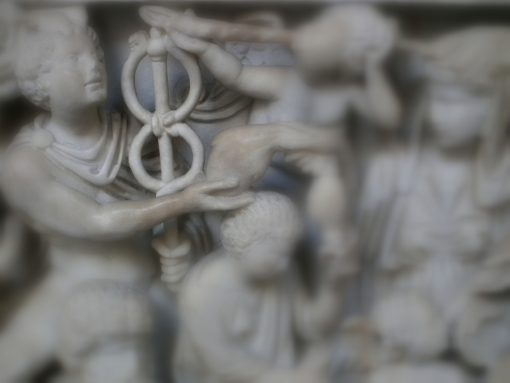
This is the caduceus that is most commonly associated with Mercury in Greek and Roman iconography. Before Mercury, the Egyptian God, Thoth was depicted holding two intertwining snakes.
In the early days of the church, the Cross was featured with a snake wrapped around the wooden shaft.
You may have also been familiar with Michelangelo’s painting of Adam and Eve and Serpent. The painting featured on the ceiling of the Sistine Chapel reveals the serpent tail is entwined around the trunk of the tree.
In modern times, this symbol is used in the logos of medical associations such as The World Medical Association, the American Medical Association, the British Medical Association and many other medical associations around the world.
However, we are told it is the rod of Asclepius, the Greek God of Healing and father of medicine, but that is typically shown as a single snake around a staff.
The kundalini energy, an asset of pure consciousness, can be used for healing, learning and revitalisation. The ancients knew this – and it would seem, so do modern medical institutions.
So why do we never hear about any of this from mainstream sources? I would wager it’s because pharmaceutical companies do not want us to know of this innate quality otherwise they would lose billions of dollars in revenue year-on-year.
The Kundalini energy is well known to Yogis of India – but I am banned from writing about that, so you will have to either take my word for it or do your own research.
The word kundalini comes from the Sanskrit word meaning spiral and is often referred to as the coiled serpent. The energy can be released through yoga or meditation and spirals up the spinal column as depicted in the caduceus.
The construction of the spine features two holes on either side which allows the energy to pass. The energy is known as Pingala and Ida, male and female energies respectively.

Ida and Pingala are depicted as serpents in Hermetic symbolism whilst the spinal column is the shaft or rod of the caduceus.
When you feel the prana energy of the kundalini, you physically feel it twisting up your back and into the crown chakra like the movements of a snake.
The number of turns the prana is three and a half, which gives new meaning to this Bible quote:
Luke 4:25: “there were many widows in Israel in the days of Elijah, when the sky was shut up for three years and six months, when a great famine came over all the land;”
The ‘widows’ is referring to the female energy becoming disconnected from the male energy.
Prana is the spiritual energy that resides in the base of the spine which when awakened, opens and clears the chakras and reconnects the individual with the divine source.
In Hindu mythology, the symbolic meaning of the serpent relates to the bringer of rain and fertility. Water purifies and all creation is born from out of the waters.
When Krishna is rescued shortly after his birth, the 10-headed serpent, Vasuki shelters the infant child from the rain, thus also recognising the serpent symbolises the protection enlightened beings have in life because they are connected to the true self.
The symbol of the serpent was also prominent in ancient Egypt. Known as the Uraeus, it was typically worn on the headdress of Pharaohs.
In the early years, the Uraeus symbolised mastery of the kundalini and the self. In later years, it became a symbol if power the Pharaoh’s had over their citizens. So just a slight corruption of its true meaning then!

The basis for the symbolic meaning of the serpent represents the good and bad aspects of man and the human life force; vital energy, wisdom, power and resurrection versus, darkness, death, evil and corruption.
The Egyptians were also aware of the kundalini energy and the serpent provided the symbolism to depict the two worlds of the physical and astral bodies. Thoth, the bringer of wisdom is sometimes found holding two snakes.
Notably, Thoth became Mercury to the Greeks and Romans, and the caduceus he holds is a clear depiction of the vital energy that is our true essence.
The story of Ra and Apep from Egyptian mythology demonstrates the dual natures of our personality. Ra is the sun god, and the dark spirit that threatened to destroy him, Apep takes the form of a serpent.
It is the same meanings as the serpent we find in the Bible and myths of Mesoamerica – the need to overcome the habitual mind and suppressed desires.
So when we examine the deeper symbolic meaning of the serpent, it is clear to see the lesson is to take control of thoughts, emotions and actions because this is how we create our experiences in life. The more control you have over your faculties, the more control you have over your life.
